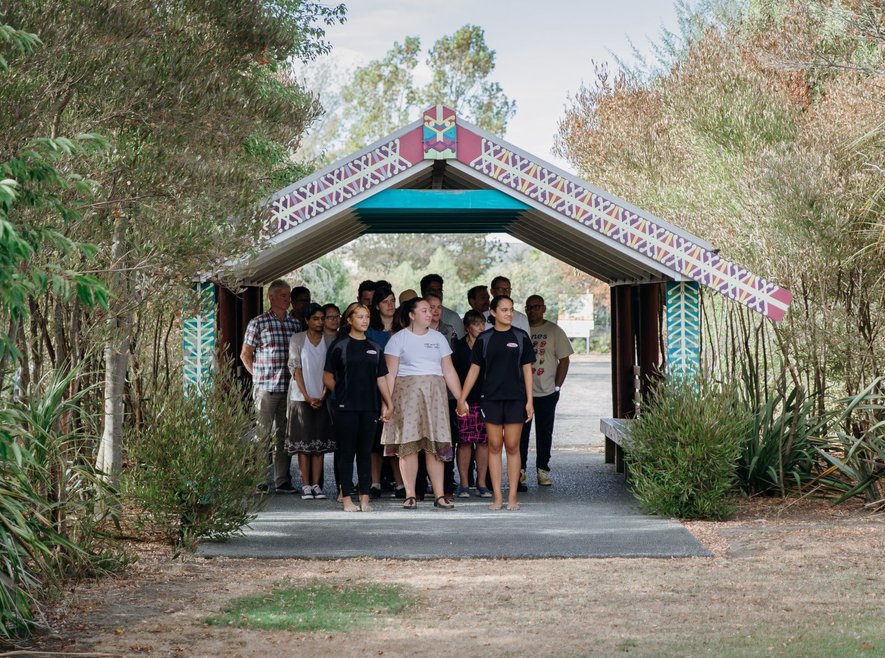3.1 Treaty principles
3.1 A commitment to the principles of the Treaty of Waitangi
A Māori health plan is essential in addressing equity. It describes how the practice plans to reduce disparities and includes the practice’s Māori demographics. The plan can be linked to the local district health board or other primary health organisation’s Māori health plan.
| Standard - what we'll be assessing on | Evidence to provide for assessment |
|---|---|
|
The practice has a commitment to the principles of the Treaty of Waitangi. Practices identify and understand the health needs of Māori. The practice partners with local Māori organisations, provider groups and whānau to deliver on these needs. |
|
Māori health plan
A Māori health plan is essential in addressing equity. It describes how the practice plans to reduce disparities and includes the practice’s Māori demographics. The plan can be linked to the local district health board or other primary health organisation’s Māori health plan. Practices need to consider how they establish priorities for Māori health with Māori members of the community or Māori health providers. Practice team members should use the plan as a tool to ensure health equity for Māori is a target for new and existing priorities.
The Māori health plan describes how the practice will:
- Commit to the Treaty of Waitangi and the principles articulated from the Wai 2575 claim.
- Address Māori health equity priority areas and specific practice population issues for Māori to improve access to appropriate and affordable primary health services (the Government has identified a range of priority areas in He Korowai Oranga: Māori Health Strategy for improving Māori health).
- Implement measures to address equity priority areas as stated in He Korowai Oranga: Māori Health Strategy.
- Deliver targeted equitable services for the enrolled Māori population; ensure ethnicity data on Māori are available and robust; and establish priorities for Māori in the practice and set goals that will benefit their health outcomes.
- Demonstrate that they are making additional efforts to address the needs of Māori. These efforts might include:
- Having specific targets and timelines, for example, measure statins in Māori versus non-Māori.
- Encouraging enrolment of Māori patients on specific programmes such as Ministry of Health and district health board programmes in chronic care management.
- Identifying and addressing any barriers for Māori to access the practice services (such as inaccessible appointments).

What the Māori health plan needs to include
- Identification of Māori enrolled with the practice.
- The health status of Māori enrolled with the practice.
- Description of the use of data and audits to develop health equity initiatives
- Key linkages (local, regional and national), for example, with local Iwi.
- Strategies (both short-and long-term) to address equity issues.
- How progress will be delivered, monitored and evaluated.
- Examples of how collaborative relationships with Māori such as iwi and/or whānau ora collectives contribute to the wellbeing of Māori patients and whānau.
The plan needs to be reviewed by the clinical governance team annually (or earlier if needed) and then shared with the practice team.
Nā tō rourou, nā taku rourou ka ora ai te iwi - With your food basket and my food basket the people will thrive.”
Developing collaborative relationships with Māori
The relationships that general practices establish with Māori partners may be influenced by geographical location, access to opportunities and the kaupapa Māori and Whānau Ora services available.
The Māori Health plan needs to include examples of how relationships with Māori and Māori health organisations have contributed, or could contribute, to the wellbeing of Māori within the practice. These efforts need to be in context with the practice’s unique circumstances and appropriate to the needs the Māori population they serve.
For practices with low numbers of enrolled Māori, consider checking Stats NZ to compare the percentage of local/regional Māori with the practice’s levels of enrolled Māori. If the results don’t tally, actions to improve this might involve the practice’s enrolled Māori patients and whānau. Some ideas may be; ensuring a friendly reception and greeting with the correct use of te reo, a welcoming waiting area, and culturally safe interactions.
Working collaboratively with Māori and Māori health providers helps practices make the right changes to their systems to promote wellbeing and health equity.

South Island |Te Waipounamu
-
Te Pūtahitanga o Te Waipounamu is the whānau Ora commissioning agency for Te Waipounamu and works on behalf of the nine Te Waipounamu iwi to determine the best ways to support whānau development. This includes partnership with the community to improve health literacy and access to health care for whānau living in Te Waipounamu.
-
Te Whatu Ora Southern lists local Kaupapa Māori services and other resources.
Partnering or collaborating with local marae and manu whenua (iwi and hapu) as well as other local health providers, as applicable, can assist with designing and delivering equitable patient services with a more local flavour. To find the local iwi and hapu (manu whenua) in your area, refer to the resources below.
Some things to consider when thinking about collaborating with Māori:
- Take the time to formulate a collective vision.
- Agree on measures of success.
- Clearly define roles and responsibilities.
- Recognise your role within the system and choose to be solution-focused and strengths-based.
- Revisit vision, roles, measures and the ‘why’ regularly.
Using data to ensure equitable outcomes
Practices need to use data to understand the specific needs of Māori in their practice populations. Practices need to conduct regular audits of their ethnicity data to uncover any inequitable access, delivery, and outcomes in any existing and proposed services.
An example of inequitable audit findings:
A practice conducts an ethnicity audit on their referral rates for the last six months to see if all patients were referred in the same way. The audit reports inequitable referral rates. The practice team discusses the audit findings and decides to make necessary changes. They plan to monitor the data and conduct the ethnicity audit again in three months to see if any progress has been made to reduce the reported inequity. To fulfil this criterion, the team submits meeting minutes or notes from the discussion, the planned changes and the schedule for monitoring the data.
Māori Health
While Māori health is a practice-wide responsibility, it is important to designate one or more people to drive Māori health initiatives, and consistently provide a Māori health perspective. Leadership is essential to closing health equity gaps. A practice must ensure an equity champion is supported to be knowledgeable on the subject, can advocate for Māori health and contributes to the decision making processes within the practice.
Rongoā Māori/traditional Māori methods of healing
The Ministry of Health has, in collaboration with representatives from the rongoā sector, developed a voluntary standard that provides clear requirements for providers. This standard defines a benchmark of excellence to deliver safe and quality rongoā services. The standard encourages and supports consistency of quality rongoā care and the ongoing development of the rongoā workforce.
Gap analysis
A gap analysis is a process that compares actual performance and/or results with expectations of performance and/or results. A gaps analysis is a way to identify missing or weak skills, capabilities, processes, practices, technologies, etc. The comparison between actual and desired performance/results highlights what elements need to be added or worked on within the practice.
To conduct a gaps analysis:
- Identify the area needed to be analysed (for example, recruiting a workforce who supports Māori patients).
- Identify the current state of the organisation in this area (for example, does the practice have a strategic plan for recruiting a workforce to support Māori patients?).
- Identify the ideal (for example, the practice has a GP fluent in te reo Māori.
- Compare the current state with the ideal to identify gaps (for example, the practice currently has one nurse who knows some te reo Māori).
- Analyse the gap (for example, why does the practice only have one person who knows te reo Māori? Will having access to a language interpreter improve patient outcomes, or is there another, better way of using the current resources? What have patients said regarding lack of language interpreters in the current team?) .
- Plan to address and fix gap (for example, support current team members to learn te reo Māori, start recruitment drive seeking candidates with language skills).
Links to resources
-
Ministry of Health Whakamaua Māori Health Action Plan 2020-2025
-
MCNZ: A pathway to Māori health equity
-
MCNZ: Statement of cultural safety
-
MCNZ: Best health outcomes for Māori: practice implications
-
RNZCGP Māori Health Strategy: He Ihu waka, he ihu whenua, he ihu tangata
-
Iwi map of Aotearoa
-
Māori Maps to identify the local marae
-
South Island whanau ora agency: Te Pūtahitanga o Te Waipounamu
-
Whanau Ora in North Island